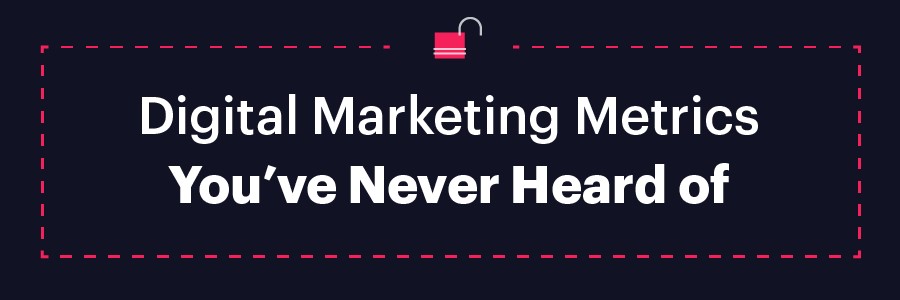Digital marketing is constantly shifting, meaning the trends that were popular several years ago may no longer be effective today. Metrics once at the core of a marketer’s strategy may no longer hold the same weight.
The world of digital marketing is fluid, so you have to stay on top of new trends and iterate as necessary. This means you may also have adaptable to new strategies the metrics you measure.
That said, measuring metrics can get tricky for beginners and seasoned marketers alike. With all the data you gather, it’s easy to get lost. This is why you need to carefully sift through the information you have to determine the right metrics to track.
But what are the right metrics to measure? No need to worry, because this article has got you covered. Here are seven of the most important digital marketing metrics you need to track this 2019.

1. Top landing pages
Measuring this digital marketing metric will enable you to determine which of your landing pages are the most visible online, especially in search engines like Google or Bing.
This metric is helpful when monitoring multiple landing pages simultaneously, because it shows which landing page is the most effective. With this information, you can allocate the necessary resources to your most effective page.
2. Channel-specific traffic
This metric can show you which online channels are responsible for the bulk of your traffic.
If your audience is visiting your website from social media, you’ll most likely spend more efforts on social media marketing. If, on the other hand, your audience is visiting your website from links embedded in your emails, then you’ll need to increase your budget for email marketing.
3. Cost per lead
Your cost per lead is the average cost of a digital marketing campaign over a specific time period divided by the total number of leads it generated over that same time period.
For example, let’s say you have a landing page that costs $2,000. Over the course of 30 days, it generated 10 leads. Your cost per lead would then be $200 ($2,000 landing page / 10 leads).
By calculating the cost per lead of your various marketing campaigns, you’ll know which one is the most effective in terms of capturing leads.
4. Exit rate
This signifies the percentage of visitors who exit from your website from a specific page.
Exit rate is often confused with bounce rate and vice versa, but they are two very different metrics. Bounces are recorded when a visitor leaves your website after viewing just one page. Exits, on the other hand, are only recorded if a visitor viewed multiple pages in a single session.
5. Lead to close ratio
Your lead to close ratio tells you how many leads you convert using your digital marketing campaigns.
If the lead came from a newsletter subscription form and made a purchase, you would then know your email marketing campaign is effective at converting leads.
6. Conversion funnel rates
This metric is the percentage of potential customers that will make it through each step of a specific conversion process. Measuring it can help you predict the channels and behaviors that will move your leads further down the sales funnel.
7. Mobile traffic
This is the number of users who visit your website using mobile devices. You can even track usage specifics such as browser, device, and content consumed.
Making your website optimized for mobile is a worthy investment because, according to SmartInsights, mobile users spend more than double the time online compared to desktop users.
Why you should care about these metrics
Tracking certain metrics gives you leverage over your competition. When you consistently monitor various digital marketing metrics, you’ll be able to see patterns much faster. You’ll notice when a certain trend starts to lose its effectiveness.
For example, ads used to be a cornerstone of marketing. Today, it’s a different story altogether. Now, most consumers find ads annoying or intrusive.
Wrap up
Forget the digital marketing mistakes you made in 2018. By measuring the digital marketing metrics above, you can definitely ramp up your marketing efforts and finish 2019 strong.





.jpg)